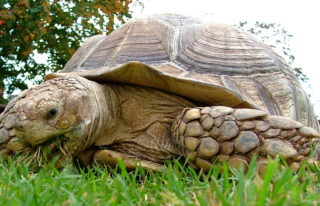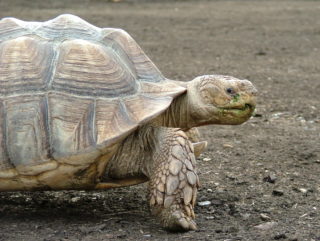Fun Facts
Burrowing to keep cool
During the dry season, the African spurred tortoises, like many tortoise species aestivate; they dig a burrow for themselves to sleep in. This is a lot like how some animals hibernate through harsh winter months, but near the equator, it's the dry season they avoid.
One shell for all occasions
Despite what cartoons would have you believe, turtles can't climb out of their shells. The scales (scutes) are made up of their fused ribs and spine. All of the bone is also covered in a thick layer of keratin.
Spurs
The 'spur' in their name comes from the spikes, or spurs, that can sometimes be seen on their hind legs. They also have some long pointy scales on their front legs, which are used to block off the front opening of their shell and to help them dig.
Mainland Giants
African spurred tortoises are the largest mainland tortoises in the world. There are two kinds of tortoises that can grow larger than them, but they both live on islands: the giant Galapagos tortoise and the Aldabra giant tortoises.
Why do tortoises move so slowly?
African spurred tortoises move slowly to conserve energy. They can survive for weeks without food when they need to. This is very important for animals that live in the largest desert in the world.


